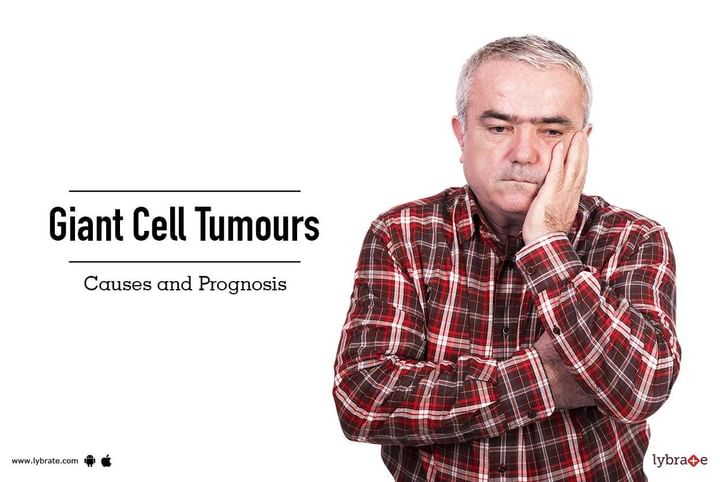Get the App
For Doctors
Login/Sign-up
Last Updated: Jan 10, 2023
BookMark
Report
Giant Cell Tumours: Causes and Prognosis
Rare forms of bone oriented tumours are giant cell tumours, which are mostly found in the bones that are long. This tumour is mostly found in young people between the age of 25 to 40 years and is more common in women than in men. The slow progressive growth of this tumour is more like a lesion rather than a mass, and it causes significant pain. It can also lead to bone destruction. Let us find out the various facets of these tumours including causes, diagnosis, treatment and prognosis.
- Causes: The actual cause of this condition is not yet known, although many orthopaedic specialists tend to associate it with Paget disease, which is a chronic bone disorder. The main symptoms of this disease include enlargement and deformity of the bones. Giant cell tumours are not associated with injuries, genetics or environmental factors.
- Symptoms: There are many symptoms that can point at the presence of the giant cell tumour. These include pain in the joints surrounding the bone on which the tumour is growing. Also, inflammation and fractures might be caused due to this growth. The surrounding joints may face difficulty as far as movement goes, and fluid retention might also take place.
- Diagnosis: The diagnosis of the condition is usually done by an orthopaedic specialist who will conduct an x-Ray to study the area surrounding the bone. This will help in throwing up images of the tissue, bones and other organs in the area. The doctor may also carry out a biopsy during which tissue samples will be procured for further examination under a microscope, so as to determine whether or not the growth is a malignant one. Also, radionuclide bone scans may be conducted to find out if there is any bone change due to other bone diseases and this tumour.
- Treatment: The treatment of this condition will depend largely on the patient's age and medical history where the doctor may take stock of any other ailments and diseases which may or may not interfere with the chosen path of treatment. One of the ways of treating this condition is with surgery that will help in removing the damaged bone. In very severe cases, amputation may also be required. Further, bone reconstruction surgery can also be followed for treatment.
- Prognosis: Local recurrence is a risk as far as giant cell tumours are concerned. A CT scan of the chest, abdomen and pelvic area should be carried out in a routine manner for at least two years after treatment.
Any persistent inflammation and pain should be checked by a doctor to detect any such growth.



+1.svg)
